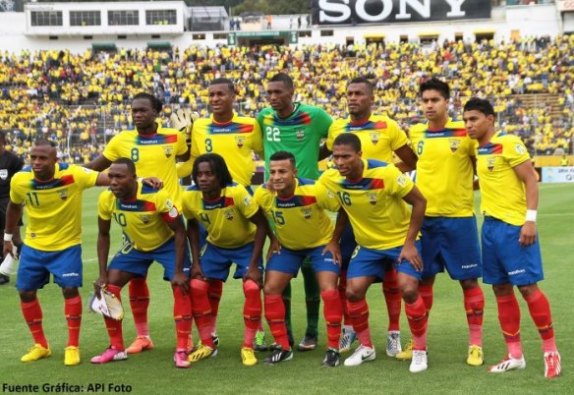Because this is a World Cup year, I have decided to countdown to the tournament by providing a short soccer/fitness related preview of each of the 32 participating nations. In this installment, I will look at Ecuador, the emerging South American nation that finished in 4th place (ahead of previous 2010 World Cup semi-finalists Uruguay) in the 2014 CONMEBOL World Cup qualification tournament. Ecuador are drawn in a group that includes Switzerland, France, and Honduras, and they play their first match against Switzerland on June 15th.
Ecuador is located on the northwestern coast of South America, and the country is aptly named, as it is literally bisected by the Earth’s equator. Because of its geographic location, Ecuador enjoys 12 hours per day of sunlight, 365 days per year. With average temperatures of over 25 degrees Celsius, the Ecuadorian players are some of the most experienced in the world at training and playing in the heat. This experience could prove vital for them at the World Cup in Brazil, a country which also covers the equator and is home to very warm temperatures year-round.
When I worked as Fitness Coach with the Canadian Women’s National U17 team, we competed in training camps in very warm climates (California, Florida, Mexico, Costa Rica) and our qualification tournament for the 2012 Women’s U17 World Cup was held in Guatemala in the middle of May. Temperatures during the 10-day tournament reached over 35 degrees Celsius, and we played all of our games on a turf field that was typically burning hot by the time we reached our 4:30pm kick-off times. The Medical team and I took several measures to ensure that our players were able to cope with the heat in Guatemala. Among them was a simple trick taught to me by a family member who had competed in triathlons in the heat: having the players grab ice cubes in each hand and hold them until they melt. Of all of our body parts, we contain some of the most sensitive skin receptors to temperature changes in our hands (if you have ever accidentally touched a burning hot stove, you can probably relate to this). The same goes with cold temperatures. As a result, holding something cold in the hands can have a profound cooling effect on the entire body. In a sport like soccer, the “ice cubes in the hands” cooling technique works best during half time, as it can take 5-10 minutes for the ice to melt completely. We noticed a big difference in the players’ performances in the second half after having cooled off with the ice.
As mentioned previously, the Ecuadorians should be very accustomed to training and playing in the heat, and they may also be very accustomed to cooling strategies like the one discussed in this article. Their group (group E) includes 2 teams from western Europe (France and Switzerland) that will be far less comfortable training and playing in the South American heat. Can Ecuador’s experience dealing with warm temperatures help them to get out of group E and into the next round in Brazil? We will have to wait and see what happens in 1 month’s time.
I’d love to hear your thoughts about this topic. Drop me a line here to get the conversation started.


Leave A Comment